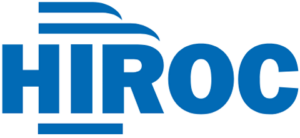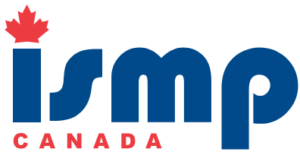A Multi-Incident Analysis of Medication Error Reports Associated with Post-Anesthetic Recovery Areas in Hospitals
This bulletin describes findings from a multi-incident analysis of medication incidents associated with post-anesthetic recovery areas and shares recommendations to improve medication safety and to pursue continuous quality improvement.
INTRODUCTION
Post-anesthetic care units (PACUs)* and other recovery areas in hospitals are key transition settings where patients recover from general or regional anesthesia and varying forms of sedation after a procedure.1-3 Medication incidents in perioperative settings have been documented.4,5 However, there are limited data examining medication incidents specifically in the PACU and other recovery areas. This bulletin describes findings from a multi-incident analysis of medication incidents associated with post-anesthetic recovery areas and shares recommendations to improve medication safety and to pursue continuous quality improvement.
METHODOLOGY
Descriptions of relevant medication incidents submitted in a 5-year period from March 1, 2019, to February 29, 2024, were extracted from reports submitted to ISMP Canada’s Individual Practitioner and Consumer Reporting programs† and the Canadian Institute for Health Information (CIHI) National System for Incident Reporting (NSIR) database.‡ Search criteria included occurrence of the incident in a PACU or other recovery room setting (e.g., same day surgery, ophthalmology). Additional search terms included variants of “perioperative” and “postoperative” (e.g., peri-op, postop). Incidents reported from a nonhospital setting or associated with patients who were transferred to critical care units directly from the operating room (OR) were excluded. The analysis was conducted according to the multi-incident analysis methodology outlined in the Canadian Incident Analysis Framework.6
QUANTITATIVE FINDINGS
A total of 297 medication incidents were extracted and screened for inclusion. After application of the exclusion criteria, 49 incidents remained for the final analysis. More than three-quarters of the incidents were reported as causing no harm. Nine incidents were reported as causing either mild or moderate harm. The remaining incidents were considered near misses or “good catches”. Opioids were the class of medications most often reported (approximately 25%).
QUALITATIVE ANALYSIS
Three main themes and associated subthemes were identified in the thematic analysis (Figure 1).

FIGURE 1. Main themes and subthemes identified in the thematic analysis.
THEME: Transfer of Accountability
Transfer of accountability also known as “report” or “handover” is defined as “an interactive process of transferring the responsibility for patient care and associated patient information from one caregiver or one team of caregivers to another, for the purpose of ensuring continuity of care and patient safety”.7 Accreditation Canada has a Required Organizational Practice focused on transfer of information at care transitions8 to support the transfer of accountability between care providers.9 Figure 2 outlines the transfers of accountability in the perioperative period.

FIGURE 2. Transfers of accountability in the perioperative period. OR = operating room
Subtheme: Incomplete Handovers
Contributing factors identified in reports of incidents that described incomplete handovers included: miscommunication of medication orders and time-sensitive dosing (e.g., antibiotics, corticosteroids); inaccurate patient information regarding allergies; and missed instructions for specific individual care.
Incident Example: A patient who had both a gastrostomy tube (G-tube) and a jejunostomy tube (J-tube), required surgery. The pre-operative transfer of accountability conveyed to the OR team noted that the patient could only tolerate medications if given through the J-tube. In the PACU, medications were inadvertently ordered to be given through the G-tube. The PACU nurse was unaware of any previous instructions given to the OR team and administered the medications through the G-tube as specified. The patient aspirated the medications and went on to develop aspiration pneumonia.
Recommendations:
- Standardize the transfer of accountability process. Properly structured handovers (e.g., SBAR, I-PASS) support sharing of sufficient information to enable the transfer of accountability for a patient between health care providers.9,10
- Ensure a mutual understanding of medications ordered and administered, and key monitoring parameters.
- An evidence-informed checklist can support transitions of care in the perioperative period.11
- An electronic medical record-based handoff tool can help reduce the likelihood of miscommunication.12
- Consider adding visual alerts to help convey important information.
- a label (or sticker) at the point of invasive line/tube access (e.g., G-tube for suction only)
- a sign at the bedside (e.g., regional anesthesia)
- Invite patients and their care partners to ask questions and be active members of their care team.13
Subtheme: Transfer of Patients with Unstable Medical Conditions
In recovery settings there are 2 phases of care: phase 1 is the period immediately following the procedure where close monitoring and specialized nursing is available to address immediate concerns or potential complications; phase 2 is focused on preparing patients for discharge from the recovery area.3 PACU/recovery room nurses use varied assessment tools adopted in their organizations (e.g., Aldrete, modified Aldrete, Post Anesthetic Discharge scoring system)3 that assess readiness for discharge to the receiving care area.
Incident Example: A patient appeared pale and unwell and was lethargic and hypotensive upon admission to the nursing unit following discharge from the PACU. After an urgent assessment, the patient required transfer to the intensive care unit where it was determined they were bleeding internally. Investigation identified that there had been some warning signs of patient instability in the PACU. It was also identified that a tranexamic acid IV infusion had been inadvertently stopped in the PACU.
Recommendations
- Ensure that patients meet organization-specific criteria for discharge from recovery areas before they are transferred to another care area.
- If the patient does not meet the criteria for discharge from the recovery room, or there is uncertainty, the anesthesiologist and/or surgeon should be notified to reassess the patient.
- Vital signs, pain assessment and dressing checks should be done just prior to transfer.
- During handover to the receiving unit, include information about medications given in the PACU/recovery room.
- Medication reconciliation, by the receiving unit, needs to integrate:
- a review of post-operative orders written by the surgical team
- a review of the pre-admission medication list
- a check that medications ordered in the PACU/recovery but not yet given (due to timing of discharge) are ordered for administration in the receiving unit
- If discharging a patient home from a recovery area, review post-operative care instructions with the patient and/or family, including signs and symptoms that should be monitored.
THEME: Medication Administration
In the PACU and other recovery area settings, medications are often ordered and administered without use of some medication system safeguards that are widely implemented in other areas of the hospital (e.g., computerized physician order entry, bar code medication administration, smart infusion pump devices).5
Subtheme: High-Alert Medications
More than half of the reports§ involved one or more high-alert medications,14 such as opioid analgesics (given by direct intravenous [IV] push or requiring the use of a smart pump via epidural route) and vasoactive medications. High-alert medications are medications that carry a heightened risk of causing significant harm when used in error and require multiple, layered strategies to prevent errors and to detect errors that do occur.15
Incident Example: An anesthesiologist administered a dose of phenylephrine to a patient with low blood pressure upon the patient’s arrival to the PACU, and ordered ephedrine 5 mg IV if needed. The patient’s blood pressure remained unstable, and the nurse mistakenly administered phenylephrine 5 mg, instead of the intended ephedrine. Additional monitoring and transfer of the patient to a close observation unit were required.
Recommendations
- Whenever possible, provide products in ready-to-use formats (e.g., prefilled syringes or prepared IV solutions).
- Consider integrating technology-based interventions (e.g., computerized physician order entry, point-of-care bar code scanning, and smart pump technology) which have built-in safeguards.16
- Implement independent double checks when administering IV push medications and when programming smart infusion pumps (e.g., to deliver patient-controlled analgesia and epidural infusions).17
Subtheme: Missed Allergy Verification
Several incident reports described situations in which there was no confirmation of allergy status through chart documentation or direct communication with the patient, resulting in the patient receiving a medication to which they had a documented allergy. A key contributing factor described in the reports was inaccurate verbal communication during care transitions.
Recommendations
- Standardize handover procedures, including communication of allergy status.
- Implement integrated and automated systems, such as those that exist in other areas of the hospital, to seamlessly communicate updated allergy information to all health care providers involved in a patient’s care.18
Subtheme: Pre-pouring of Medications
Pre-pouring is the process of preparing a medication in advance, which leads to a delay between preparation and administration of the medication, or the simultaneous preparation of multiple medications for different patients.19 Reports described errors with IV push medications (e.g., opioids, antiemetics) prepared in advance in anticipation of the need for frequent administration.
Incident Example: A nurse administered morphine to a patient using a syringe prepared by another nurse. The nurse assumed the syringe had been prepared from a 2 mg vial of morphine and determined the volume for injection accordingly. Later, it was determined that the syringe had been prepared using a 10 mg vial of morphine. The patient was inadvertently given 5 mg when the intended dose was 2 mg; there was no harm to the patient.
Recommendations
- Reassess workflow to minimize workarounds such as pre-pouring. If pre-pouring of medications is a regular occurrence, treat the situation as an opportunity to address underlying issues leading to this practice.19
- A nurse should both prepare and administer medications needed only for their assigned patients.
- For emergency situations, and in phase 1 recovery where more than one nurse is involved in the preparation and administration of medications, perform a double check by having one nurse prepare and label the medication and the other nurse independently verify the medication used and the dose before administering it.19
THEME: Hybrid Documentation System
Hybrid documentation systems use a mix of paper and electronic records. In hospitals where perioperative care areas continue to use a paper-based system (because they have not yet been integrated into the electronic system), there is an increased risk of medication omission errors.
Incident Example: A preadmission medication list received by the PACU for an admitted patient was not scanned and sent to pharmacy as per hospital protocol. Post-operative orders did not include the patient’s regular medications. As a result, the electronic MAR was incomplete and doses of multiple medications were missed over a 24-hour period.
Recommendation
- Integrate records from perioperative areas into digital systems to reduce the risk of order omissions.
CONCLUSION
Shared learning from reports of incidents associated with the PACU and other recovery areas identifies opportunities for (i) improved integration of hospital systems that support care, including electronic order entry and documentation systems, (ii) implementation of safeguards for high-alert medications, and (iii) standardized processes/checklists/tools to support structured clinical handovers.
![]()
The Canadian Medication Incident Reporting and Prevention System (CMIRPS) is a collaborative pan-Canadian program of Health Canada, the Canadian Institute for Health Information (CIHI), the Institute for Safe Medication Practices Canada (ISMP Canada) and Healthcare Excellence Canada (HEC). The goal of CMIRPS is to reduce and prevent harmful medication incidents in Canada.
Funding support provided by Health Canada. The views expressed herein do not necessarily represent the views of Health Canada.

The Healthcare Insurance Reciprocal of Canada (HIROC) provides support for the bulletin and is a member owned expert provider of professional and general liability coverage and risk management support.

The Institute for Safe Medication Practices Canada (ISMP Canada) is an independent national not-for-profit organization committed to the advancement of medication safety in all healthcare settings. ISMP Canada’s mandate includes analyzing medication incidents, making recommendations for the prevention of harmful medication incidents, and facilitating quality improvement initiatives.
Report Medication Incidents (Including near misses)
Online: ismpcanada.ca/report/
Phone: 1-866-544-7672
ISMP Canada strives to ensure confidentiality and security of information received, and respects the wishes of the reporter as to the level of detail to be included in publications.
Stay Informed
Subscribe to the ISMP Canada Safety Bulletins and Newsletters.
This bulletin shares information about safe medication practices, is noncommercial, and is therefore exempt from Canadian anti-spam legislation.
Contact Us
Email: cmirps@ismpcanada.ca
Phone: 1-866-544-7672
©2025 Institute for Safe Medication Practices Canada.
